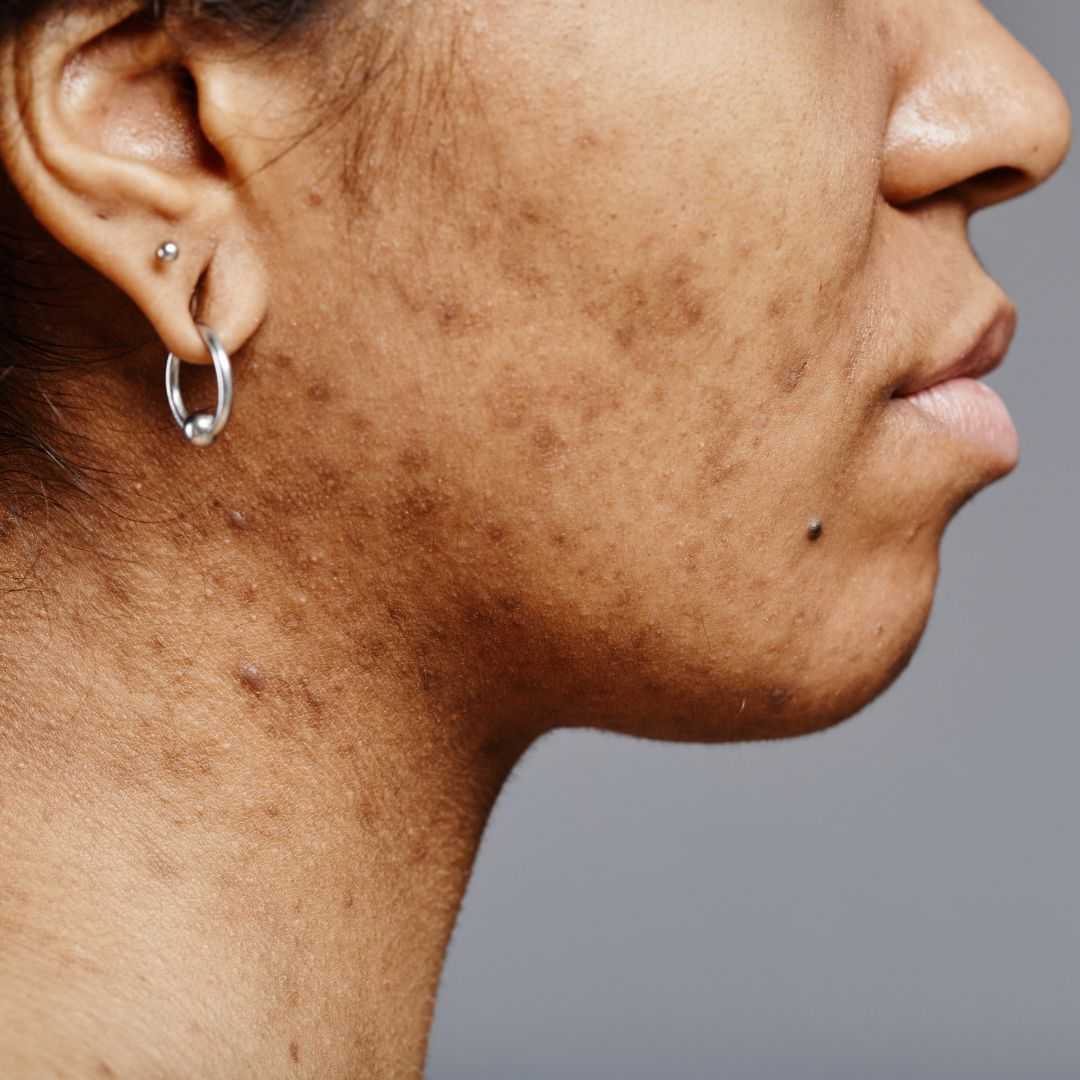Visible scars can impact your appearance, but Dr. Sudhakar Prasad’s expert treatments help restore smooth, natural-looking skin.

Even after years, some scars stay visible, constantly reminding you of past surgeries or injuries.
Despite trying various creams, scars remain stubborn, leaving you feeling defeated and unsure of your options.
Visible scars, particularly on the face, can make you feel self-conscious and affect your interactions with others.
With over 28 years of mastery, Dr. Sudhakar Prasad turns the art of scar revision into a canvas of skin perfection. By addressing the nuances of each scar’s story, he takes a personalized approach to minimize its presence. Say goodbye to daily reminders and hello to seamless skin.
Dr. Prasad uses advanced techniques to minimize scarring, ensuring your skin regains a smooth, natural texture that blends seamlessly with your tone.
By targeting scars with precision, Dr. Prasad’s treatments effectively reduce visible imperfections, leaving you with clear, flawless skin.
Dr. Prasad’s personalized scar removal methods provide lasting improvements, ensuring your skin remains smooth and youthful for years.
Dr. Prasad customizes treatments to ensure that scars, especially on the face, are removed with precision, restoring balance and enhancing your features.
Dr. Prasad’s expertise in scar removal helps you regain clear skin, boosting your self-esteem and giving you the confidence to face the world.
Using cutting-edge scar revision methods, Dr. Prasad targets even the most persistent scars, restoring your skin’s natural texture and appearance.

Scar removal is a cosmetic procedure aimed at improving the appearance of scars left by injuries, surgeries, or conditions like acne. Scars can range from small, superficial marks to larger, more noticeable ones. Scar removal treatments, such as laser therapy, chemical peels, or surgical revision, are designed to reduce the size, texture, and visibility of scars.
Scar removal works by targeting the underlying scar tissue and stimulating the skin to heal in a more uniform manner. For example, laser treatments use focused light to break down the scar tissue and encourage the growth of healthy skin cells. Chemical peels remove the top layer of skin, promoting the regeneration of smoother skin beneath. In more severe cases, surgical revision may be necessary to physically remove the scar tissue and re-align the skin for a more natural appearance.
For most patients, laser treatments for scar removal can show visible results within 4-6 weeks. However, if you undergo surgical scar revision, it may take 3-6 months for full results to appear as your skin heals and the scar softens.
Dr. Prasad provides a personalized recovery plan to help you achieve the best outcome as quickly as possible.
While scar removal treatments can significantly improve the appearance of scars, complete elimination may not always be possible, especially with deep or older scars.
However, Dr. Prasad’s advanced techniques can minimize the visibility of scars, blending them seamlessly with your natural skin tone and texture. The goal is to make scars less noticeable and restore a smoother appearance.
Yes, Dr. Prasad tailors each treatment to suit your unique skin type and scar characteristics. For example, laser treatments are adjusted based on skin color and scar depth to ensure safety and effectiveness.
Whether you have lighter or darker skin, Dr. Prasad uses the latest technology to achieve optimal results while minimizing risks.
Dr. Sudhakar Prasad will evaluate your scar during a consultation to determine the most effective treatment. For superficial scars, laser therapy or chemical peels may be sufficient, while deeper scars may require surgical revision.
Dr. Prasad’s expertise ensures that you receive the most appropriate treatment for your specific case, ensuring the best possible outcome.
The cost of scar removal treatments in Hyderabad can vary based on the size, location, and type of scar, as well as the treatment method chosen.
Laser treatments typically cost less than surgical revision. Insurance may not cover cosmetic procedures, but Dr. Prasad offers flexible payment options and transparent pricing during your consultation.
Non-invasive treatments like laser therapy typically involve minimal downtime, with most patients resuming normal activities within a few days.
However, surgical revision may require a longer recovery period, with some swelling and redness lasting for a few weeks. Dr. Prasad will provide detailed aftercare instructions to ensure you recover comfortably and achieve the best results.
To maintain the results, it’s essential to follow Dr. Prasad’s post-treatment instructions, which may include applying sunscreen, avoiding direct sun exposure, and moisturizing the treated area.
For some patients, periodic touch-up treatments may be recommended to ensure that scars remain minimal and your skin stays smooth.
Understanding the cost of scar removal treatments is crucial when considering the right option for your skin restoration. The price of these procedures can vary based on factors such as the size and type of the scar, the treatment method, and the experience of the surgeon.
Dr. Sudhakar Prasad offers a variety of treatments tailored to your needs, and he provides transparent pricing to ensure you are well-informed before making a decision.

Non-invasive treatment using focused light to break down scar tissue. Multiple sessions may be required for optimal results.
Pricing starts from ₹15,000 - ₹50,000 per session
A chemical solution is applied to exfoliate the skin and promote the growth of new, smoother skin.
Pricing starts from ₹8,000 - ₹25,000 per session
Small needles create micro-injuries to stimulate collagen production and improve scar texture.
Pricing starts from ₹10,000 - ₹30,000 per session
A surgical procedure to remove or reposition the scar tissue, typically used for deep or large scars.
Pricing starts from ₹30,000 - ₹1,50,000
Injecting fillers to plump up depressed scars and restore a smoother surface.
Pricing starts from ₹12,000 - ₹40,000 per session
Utilizes your own blood’s platelets to encourage healing and improve the appearance of scars.
Pricing starts from ₹10,000 - ₹35,000 per session

When it comes to liposuction in Hyderabad, experience is everything—and Dr. Sudhakar Prasad has over 28 years of expertise in performing cosmetic and plastic surgeries with precision.
From shaping your body to enhancing your natural contours, his deep understanding of the human body makes him one of the most trusted surgeons in Hyderabad. Dr. Prasad is renowned for his ability to create natural-looking results with minimal downtime, ensuring you’re back on your feet—and looking your best—faster than you thought possible.
As the President of the Indian Society for Microsurgery and a member of the Asia Pacific Cranio-Facial Association, Dr. Sudhakar Prasad brings a wealth of expertise to every procedure.
With 1000s of happy patients, Dr. Sudhakar Prasad has successfully handled a wide range of complex cases, earning trust and delivering outstanding results in the fields of plastic, reconstructive, and microsurgery.
Discover how Dr. Sudhakar Prasad has transformed lives with personalized care and exceptional results through the experiences of his satisfied patients.



Crisalix’s revolutionary 3D imaging helps you visualize your post-scar-revision transformation.
It’s as close as it gets to a time machine: witness your skin’s potential and collaborate with Dr. Prasad to achieve it.

When considering scar removal, many patients have doubts, whether it’s about the procedure itself, the potential costs, or the results. These concerns are completely valid, and it’s essential to address them to ensure you feel confident about moving forward. Dr. Sudhakar Prasad, with his extensive experience in skin restoration, is committed to providing personalized care and clarity.
It’s understandable to worry about pain, especially when it comes to treating scars. However, Dr. Prasad’s advanced techniques, such as laser therapy and minimally invasive scar revision, are designed to minimize discomfort.
During the procedure, local anesthesia or numbing creams are applied, so you won’t feel pain. Post-treatment, you might experience mild swelling or redness, but this usually subsides within a few days. Most patients find that the temporary discomfort is manageable and well worth the improved skin appearance.
Not all scars are the same, and some may require more specialized treatment. For example, hypertrophic scars and keloids—raised, thick scars—can be more challenging to treat, but Dr. Prasad has specific techniques for these cases, such as steroid injections or surgical excision.
For more superficial scars, laser treatments or micro-needling can work wonders. Dr. Prasad’s thorough consultation will determine which approach is best for your unique scar type, ensuring optimal results.
The cost of scar removal varies based on the treatment method and the size of the area being treated. While it might seem like a significant investment initially, consider the long-term benefits. Over-the-counter creams or home remedies often don’t provide lasting results, meaning you may spend money repeatedly with little improvement.
Dr. Prasad’s treatments are designed for long-term, visible results, and his expertise ensures that the investment in your skin’s health is well worth it. The cost is also reflective of the high-quality care and advanced technology used, which leads to safer, more effective outcomes.
The number of sessions required depends on the severity of the scar and the type of treatment. For example, laser treatments typically show noticeable improvement after one session, but deeper scars or larger areas may require multiple sessions.
Dr. Prasad will create a personalized treatment plan, so you’ll know exactly how many sessions are necessary to achieve the desired results. His goal is to ensure that every treatment is effective, with minimal downtime and maximum benefit.
Recovery time depends on the procedure. Non-invasive treatments like laser therapy may require only a few days of healing time, during which you might experience slight redness or swelling. For more invasive procedures, such as surgical scar revision, you might need a few weeks to fully recover.
Dr. Prasad provides detailed aftercare instructions to ensure your recovery is smooth and your results are optimized. Most patients are able to resume normal activities within a short time after treatment.
While no procedure can guarantee complete scar elimination, Dr. Prasad’s techniques significantly reduce the appearance of scars and prevent them from reappearing. The risk of recurrence depends on factors such as the type of scar, your skin type, and how well you follow aftercare instructions.
Dr. Prasad works closely with patients to monitor healing and ensure the best possible outcome. In rare cases, additional treatments may be required to further refine the results.
It’s common to feel hesitant about discussing your decision with family and friends, especially when it comes to cosmetic procedures. However, it’s important to focus on your own reasons for wanting scar removal. If scars are affecting your self-esteem or causing you distress, that’s a valid reason to seek treatment.
Dr. Prasad encourages open conversations and is happy to provide information that can help you explain the process and benefits to your loved ones. Ultimately, this is about improving your quality of life and feeling comfortable in your skin.
Reach out to Dr. Sudhakar Prasad today to discuss how his expertise in advanced skin restoration can help you achieve smoother, natural-looking skin.